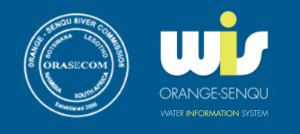Overview and Purpose
The main purpose of this transboundary diagnostic analysis (TDA) is to provide a scientific and technical basis for the identification and prioritisation of key issues concerning the degradation of aquatic ecosystems in the Orange–Senqu River basin. It is intended as a decision-support tool for the Orange–Senqu basin states and stakeholders to identify areas of future action to address key issues.
It is aimed at, amongst others, civil society, industry, governments, academia and environmental groups in the four basin states.
During the development of a preliminary TDA (2008), extensive inter-sectoral discussions involving all four basin states identified the priority transboundary issues as:
- stress on surface and groundwater resources
- altered water flow regime
- deteriorating water quality
- land degradation
- spread of alien invasive plants and animals.
Building on the results and recommendations of the preliminary TDA, a number of studies were carried out, the information and findings of which are compiled in this document. An important step in the development of this TDA involved validation of findings by recognised experts and institutions in the basin. Revised causal chain analyses were reviewed at national meetings of experts and institutional representations in each of the four basin states. The outcomes of these meetings were subsequently incorporated into this document and is summarized below:
Increasing demand for water:
As a result of high and increasing demands for water, especially in the upper area of the basin and for irrigation in the drier areas, there is less water flowing through the system and less water to dilute pollutants, resulting in significantly higher costs for water treatment for domestic water provision and other uses. Ecologically, these factors have led to the degradation of wetland and riverine habitats, including ephemeral rivers and the estuary.
Although there are limited options to increase abstraction and use of surface water in the basin, a number of interventions to improve the efficiency and management of its supply and use are suggested, including managing demand and examining the potential of alternative sources.
Limited understanding of resource potential in the basin, especially of groundwater, is a key concern. Rainfall, flow, and groundwater resource monitoring, analysis and evaluation need to be improved. There is also a need to improve the water balance model of the basin. The boundaries of sub-systems, and inputs and outputs of transfer systems need to be better defined, especially in the quantification of inter-basin transfers.
Changes to hydrological regime:
As a consequence of upstream development, the hydrological regime of the river has changed dramatically. Apart from the mean annual runoff being reduced, the pattern of flow is different to that of the natural river.
The establishment of basin-wide environmental releases is central to mitigating these problems. Greater coordination between development industries, especially, and the water sector is also required. To create a better understanding of what the environment requires, there is a need to increase hydrological and environmental monitoring throughout the basin.
Declining water resources quality
The key water resources quality issues in the Orange–Senqu River system have been identified as nutrient enrichment; increased salinity; microbial contamination and changes in sediment load. In addition, radio nuclides, heavy metals and persistent organic pollutants, while they do not currently pose a basin-wide risk, do show high concentrations in certain localised areas, and precaution should prevail.
At a time when the types and sources of pollution are increasing, reduced volumes of water in the system prevent their effective dilution, compounding the water resources quality problem.
As a result of declining water resources quality health risks for the population increase, as do the costs for treating the water to sufficient
quality levels fit for human consumption and other uses. Reduced water resources quality also makes the water less suitable for potential uses downstream, thus reducing economic development options.
Upgrading infrastructure, improving monitoring and enforcing compliance will go a long way to addressing the issues. However, research is also required to establish the extent of some of the pollution concerns and to determine best practices for addressing them. To implement such interventions, capacity and skills need to be developed.
Land degradation
Inappropriate land management in different parts of the Orange–Senqu basin has led to a variety of land degradation issues, including loss of wetland storage and aquifer recharge, increased sediment loads, deteriorating water quality, increased distribution and abundance of alien invasive plants, loss of biodiversity, and lowered land productivity.
The main sectors linked to the immediate causes of land degradation are agriculture (at commercial and subsistence levels) and mining. Cross-cutting causes relate to the disturbance and degradation of areas and spread of alien invasive species.
Land degradation and the resulting lowered productivity reduce the food production possibility for both subsistence as well as commercial farmers in the basin, ultimately bearing the potential for increased poverty.
Potential interventions are aimed at improving land management practices, identifying alternative livelihoods and rehabilitation of degraded areas through an integrated and participatory approach. It requires changes in policy, as well as practice.
Based on this TDA, strategic planning documents – national action plans (NAPs) for each of the basin states, and a basin-wide strategic action programme (SAP) – are currently being developed. These will outline appropriate and agreed management responses to address the problems identified here.
Funding Organization(s):
Global Environment Facility through United Nations Development Programme
Report:
